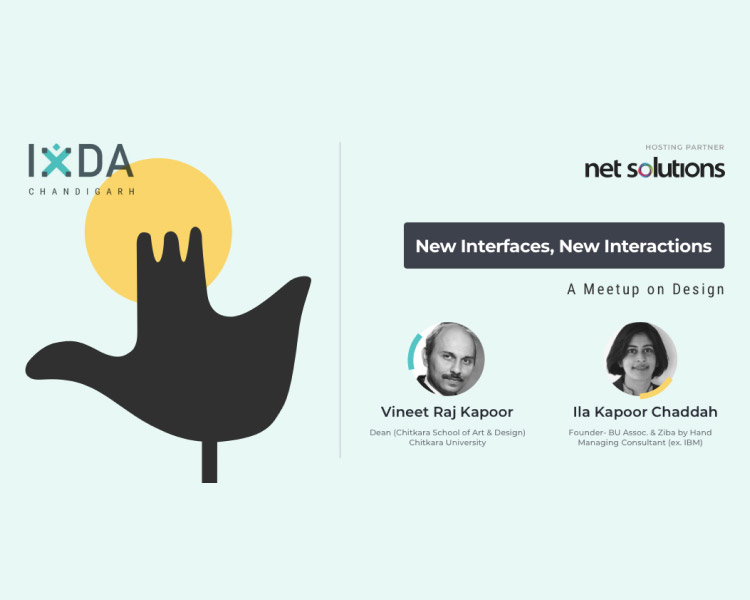The term User Experience has become rather familiar in the past few years. However, the original term that we’ve always used for the design of interactive systems is Interaction Design—an intersection of information architecture as well as the study of human behavior.
Abhay Vohra, program manager for experience design at Net Solutions and local leader IxDA, shared this interesting bit with us during the opening of IxDA’s first local meetup in Chandigarh on Friday 26th April at Net Solutions Campus. It was an evening of engaging talks and discussions on all things UX and Design Thinking.
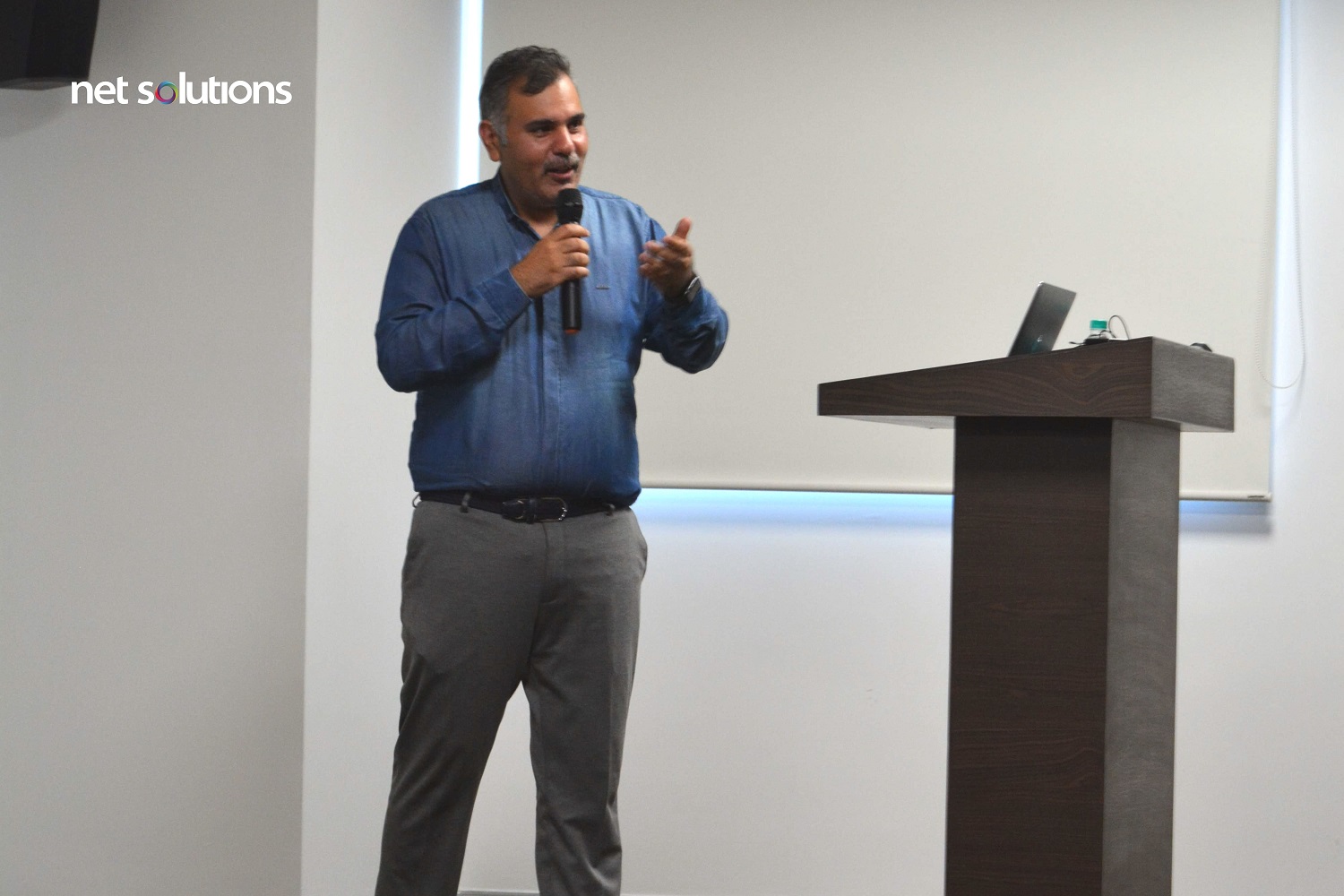
The opening speaker for the evening was Mr. Vineet Raj Kapoor, Program Director at Chitkara University, Game Designer & CEO, VirtualSoft, and Career Expert with ICE (founded by Balaji Telefilms), followed by Ila Kapoor Chaddah, Managing Consultant (ex. IBM) and Founder, BU Associates and Zibe by Hand.
User Experience Design—Learning from Experience
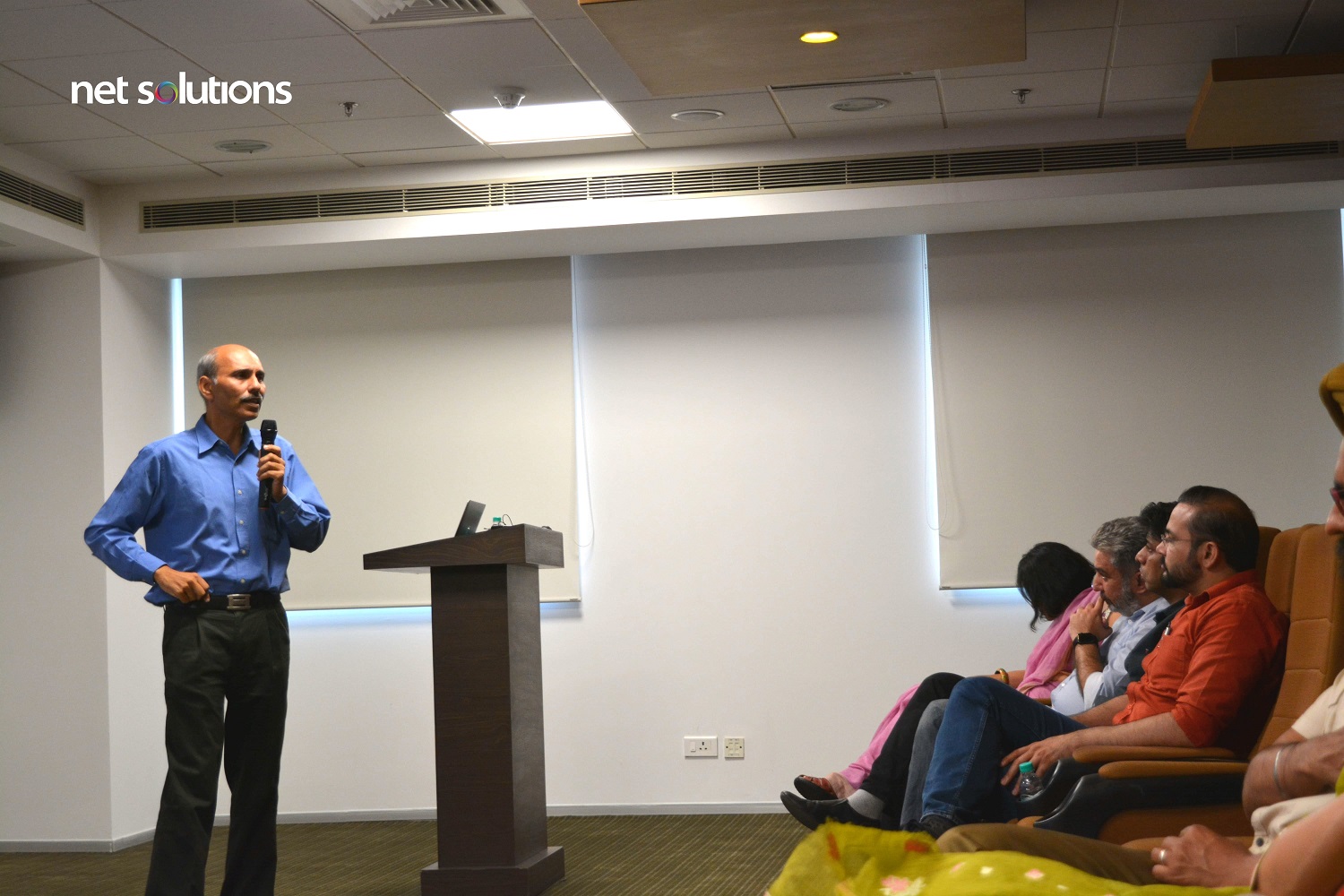
Mr. Vineet Raj Kapoor, who designed his first game in the early 80s, gave a talk you’d not expect in a traditional UI/UX discourse. He’s one of those who believe that UX has been there for a very long time, even when there were no websites and mobile applications. He believes that empathy is one of the major aspects of UX, something absolutely necessary to make good design. However, empathy, though necessary, is very difficult to invoke.
Mr Vineet Raj Kapoor also shared that designing experiences right away is a rather bad idea. It takes time to understand contexts that surround the design of the experience. Unless you have become experienced, you cannot make good design.
He began illustrating his talk with examples from the very map of the City Beautiful, a typical example of user experience design. He shared how “leading the eye” becomes as much a tenet in user experience as it does in a map of a city. T-points are important; that’s where you aim to focus the user’s eye.
Mr. Kapoor shared examples of David Ogilvey, who credited all of his learning in advertising to his first job as a chef, Steve Jobs’ making of the iPhone, and Walt Disney’s creation of the Disneyland. His talk was replete with logical explanations of how user experience pervades almost everything we see around us.
Thus, his suggestion that the persona itself is not design, it is the behavior that makes the design; elements on an interface is not design; what the user can do with it, is design.
Defining Design Thinking
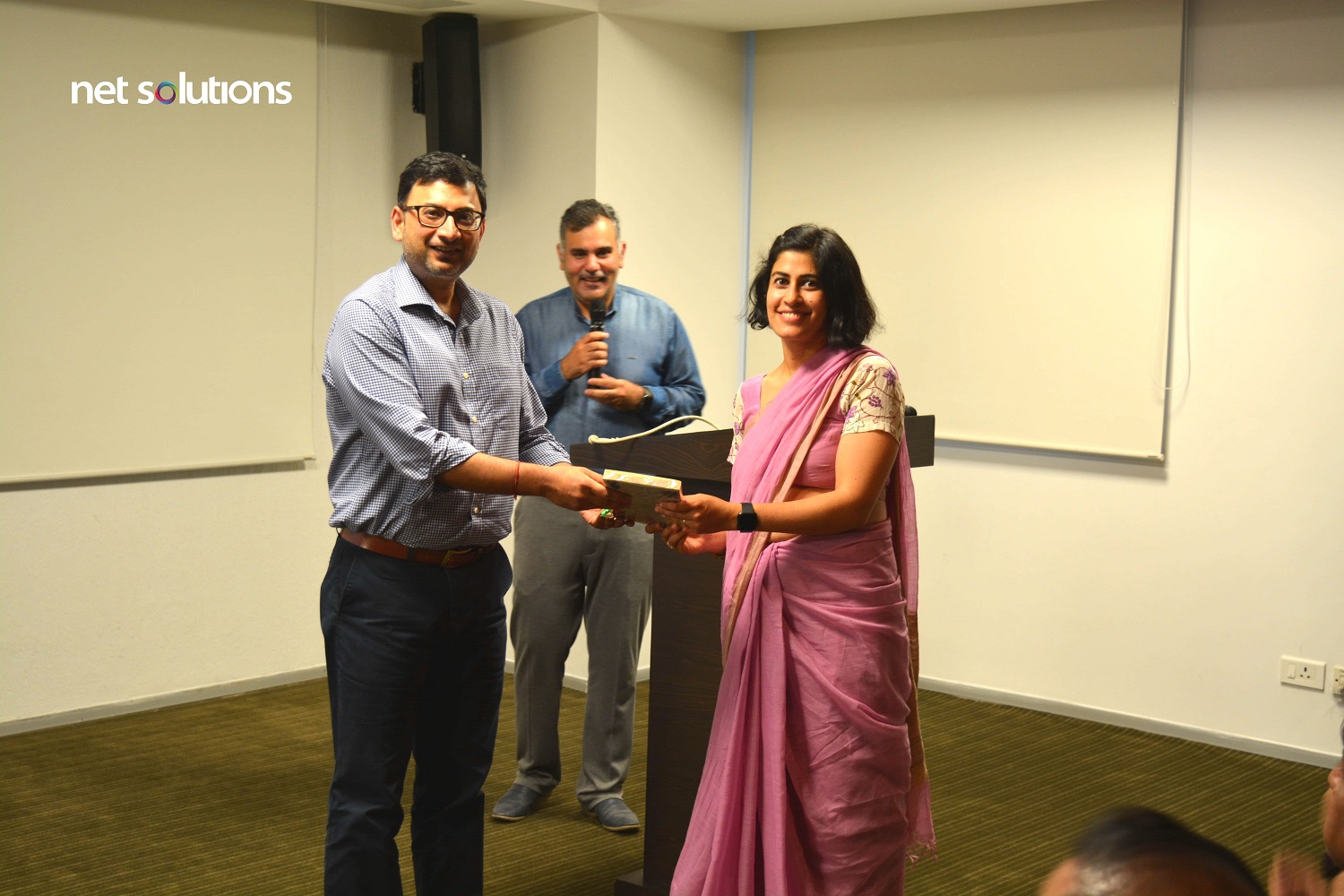
Ms. Ila Kapoor Chaddah started her talk by asking us to design a vase on a piece of paper. She got us thinking about what user experience is, leading us to ponder upon the very notion of design—design doesn’t begin with a solution, it begins with a problem.
Taking the examples of Steve Jobs again, Ms. Chaddah suggested what lies behind good design is the agony that goes in the making of design. The whole process (“the yelling and shouting among the designers”) of creating a final product for the user to delight them, is design. Usable is no more equivalent to good enough. Human emotions have evolved with the evolution of the digital, and it’s the emotions that are the epicenter of all design endeavors.
Taking reference from Vineet’s discourse, Ila again highlighted the importance of empathy in Design Thinking. Design is a loop. You understand the user’s emotions, build a prototype, and then see what doesn’t work, and improve on it until you have the final product that delights. Products like Uber work on the same principle.
From her experience with IBM, Ila explained Design Thinking as People, Process, and Practices, where various people across work groups and work streams, customers, designers, and developers gather and join in for the Design Thinking process, which is a great way to go about design. Customer personas, their journeys, and empathy maps make the base for this process. This way, great ideas, even out of the box ideas come out.
Hills—the problem statement you are trying to solve; Playbacks—when you are constantly aligning with your team in the exploration stage, referring back to the problems; and Sponsors Users—people who will be the end-users, who cater to the need of giving constant feedback are the three important elements on the process of Design Thinking.
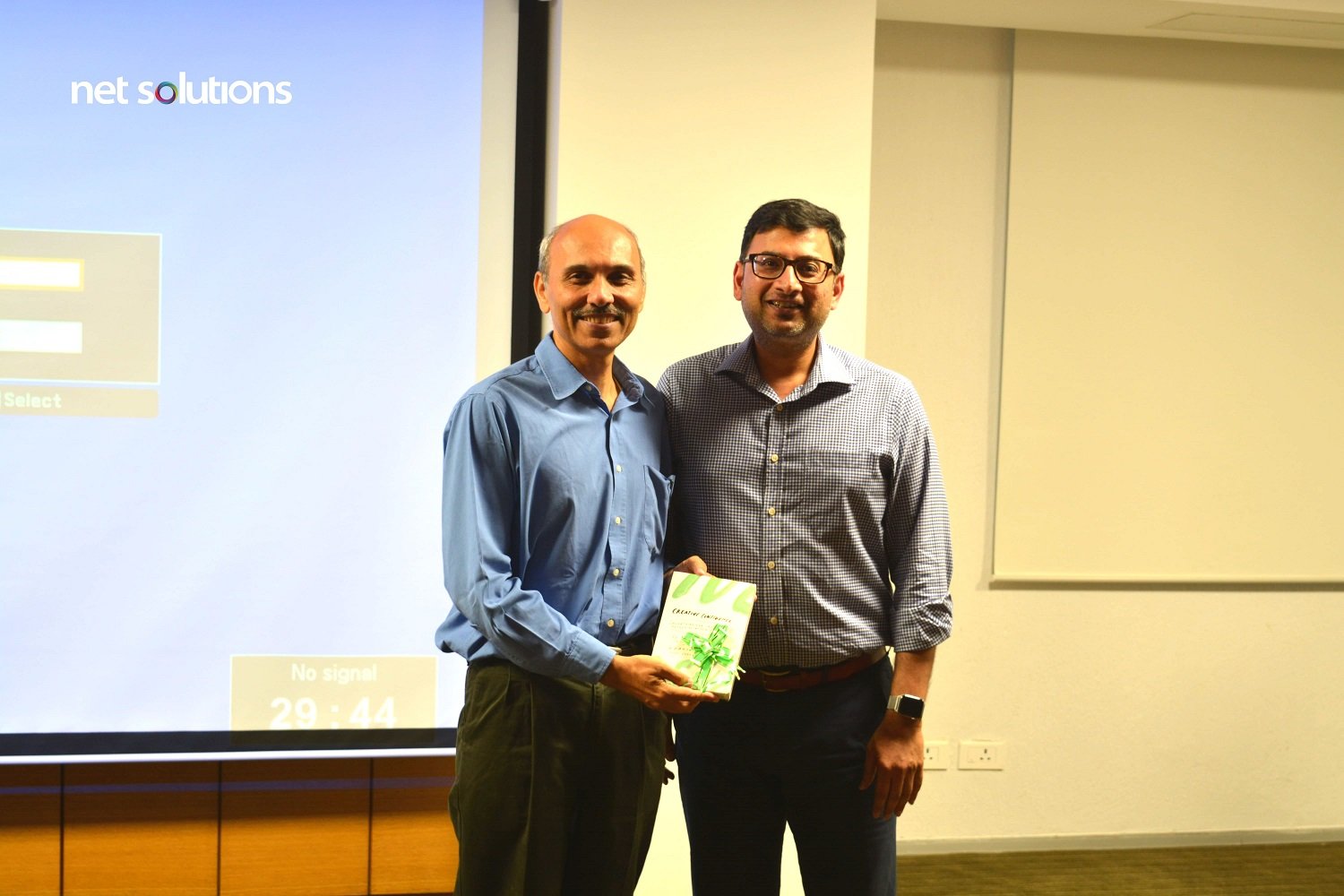
The Takeaway
With these two talks on User Experience and Design Thinking, IxDA Chandigarh chapter was kicked off, paving the way for more of such engaging and enlightening discussions to come.
While we took away some important lessons in design, two of our guests also took home some goodies in the lucky draw. The evening was brought to a close with a word from Sameer Jain, CEO, Net Solutions followed by felicitation to the esteemed speakers.

